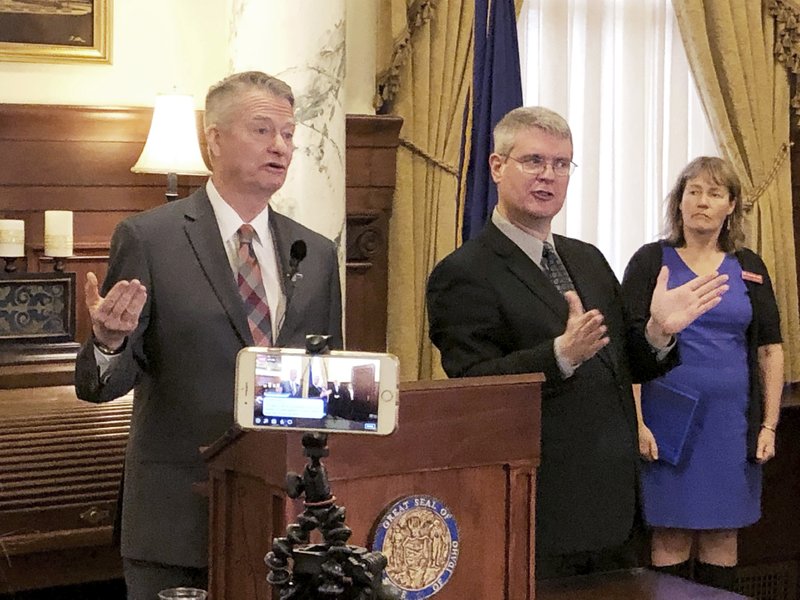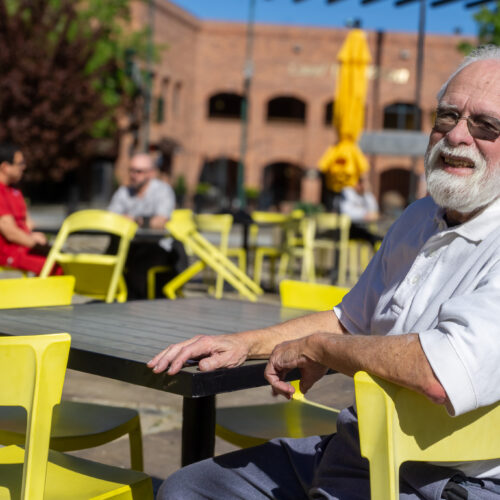
A High Statewide Rate, With Big Fluctuations: Reading Idaho’s Coronavirus Numbers
WATCH
(NOTE: This episode of NWPB’s Uniquely Northwest News was recorded on March 25, 2020. More episodes are here. See below the video for Kevin Richert’s current “Reading Idaho’s Coronavirus Numbers” article.)
BY KEVIN RICHERT / IdahoEdNews.org
Idaho has one of the highest coronavirus rates in the nation, according to a state epidemiologist.
But infection rates can vary widely from county to county. And Idaho’s daily case reports fluctuate too.
As the coronavirus outbreak closes Idaho’s public schools and college campuses — and stifles what was a growing state economy — many Idahoans are struggling to make sense of the math of the coronavirus. The numbers can be confusing, and they can certainly be frightening. We asked the Idaho Department of Health and Welfare for a tutorial. Here’s what we learned.
First off, how do Idaho’s numbers compare to the rest of the nation? Near the top 10, according to deputy state epidemiologist Kathryn Turner. That’s based not on the total number of coronavirus cases — but on the relative rate of infection.
Turner tracks the states’ coronavirus cases and divides that against the states’ population, which produces an infection rate. As of Saturday, Idaho had about 63 confirmed coronavirus cases per 100,000 residents. Only nine states and the District of Columbia had a higher infection rate.
Only one neighboring state has a higher rate: Washington, which has wrestled with the coronavirus outbreak for months, has about 75 confirmed coronavirus cases per 100,000 residents. New York has the highest rate in the nation, 464 confirmed cases per 100,000 residents, followed by New Jersey (288 cases per 100,000 residents) and Louisiana (197 cases per 100,000 residents).
How should we read those local numbers? Let’s look at the two counties that account for the majority of Idaho’s coronavirus cases: Blaine and Ada counties.
On Monday afternoon, the state reported 423 confirmed coronavirus cases in Blaine County, and 419 cases in Ada County. But since Ada County’s population is 20 times larger than Blaine County’s population, the infection rates are very different.
Blaine County’s current numbers translate to 1,979 cases per 100,000 people — and that’s why the county’s infection rate exceeds even New York City’s.
ALSO SEE: Coronavirus News, Updates, Resources From NWPB
By contrast, Ada County’s numbers translate to 107 cases per 100,000 people. Neighboring Canyon County, Idaho’s second-largest county by population, has 55 cases per 100,000 people. Idaho’s third and fourth most populous counties, Kootenai and Bonneville, have 31 cases per 100,000 people and six cases per 100,000 people. respectively.
And these are only confirmed cases? Yes, and that’s been a big concern during this outbreak, in Idaho and beyond. State officials have said the state’s testing capacity is less than ideal.
The state adds test results daily, and those numbers can vary too, ranging from 1,391 results Saturday to just 251 results Monday. Even so, the state has received slightly less than 11,250 results, from the state lab and commercial labs.

File photo. Idaho Gov. Brad Little, left, announces stricter guidelines for social interactions to slow the spread of the new coronavirus, and also livestreaming the discussion, at his office in Boise on March 18, 2020. CREDIT: Keith Ridler/AP
What are the trends? As of Monday afternoon, the state and its health districts were tracking 1,173 coronavirus cases. Five days earlier, the state was tracking 668 cases. In other words, the state’s case numbers increased by 76 percent over five days.
Epidemiologists such as Turner look closely at the “doubling rate:” the time it takes for case numbers to increase by 100 percent.
“Doubling times are a measure of the rate of spread of a disease and also indicate the magnitude of control efforts required to stop spread,” Turner said in an email Monday. “As an epidemic declines, the doubling time increases, so what we want to see is the doubling rate increase — that is the best way to determine whether we are in an acceleration, plateau, or deceleration phase.”
In this case, the doubling time is a way of gauging whether social distancing and stay-at-home orders are making a difference. If these measures are helping to slow the spread of the coronavirus, that should translate into slower doubling times.
Some encouraging news: For much of last week, Idaho’s coronavirus numbers doubled every three days, according to Idaho Education News’ analysis of daily case numbers.
So let’s talk about flattening the curve — in Idaho and beyond. Like “social distancing,” “PPEs” and “self-isolation,” “flattening the curve” has become a part of our everyday lexicon during the coronavirus outbreak.
A truly flat curve occurs when a state or a country stops adding new cases. The doubling rate goes away entirely.
Before that happens, case numbers start to taper off.
“Flattening the curve involves reducing the number of new COVID-19 cases from one day to the next,” Johns Hopkins University says on its coronavirus website. “This helps prevent healthcare systems from becoming overwhelmed. When a country has fewer new COVID-19 cases emerging today than it did on a previous day, that’s a sign that the country is flattening the curve.”
That’s why the raw numbers of new cases are important. In global hotspots such as Italy, Spain and Iran, Johns Hopkins says, the daily new case numbers are showing signs of decreasing. As the United States heads into a critical juncture in the coronavirus outbreak, daily case numbers are an important data point; the United States has been reporting roughly 30,000 new confirmed cases daily.
Now, let’s look at Idaho. On Thursday, Idaho added 229 new confirmed cases, a one-day high. The new case numbers dropped over the next three days: 119 on Friday, 66 on Saturday, 25 on Sunday.
But are these real-time numbers? No.
The state’s seven health districts aren’t required to file daily reports, Health and Welfare spokeswoman Niki Forbing-Orr said Monday. They submit potential cases through a state surveillance system, and on weekends, the districts file these reports as best as they can.
In addition, the state’s lab doesn’t process test results on Sundays.
ALSO SEE: Coronavirus News, Updates, Resources From NWPB
In other words, there’s going to be some lag time, and that was evident Monday morning. The South Central Public Health District reported 34 new cases Monday morning, and that alone exceeded the increase reported Sunday.
All told, Idaho added 66 coronavirus cases Monday.
How we track the numbers: You can find updated coronavirus case numbers on a searchable map on our coronavirus website page. We combine figures from the state and the health districts, so our numbers will tend to be slightly higher than , which tracks only confirmed cases. We will also track weekly case trends at Kevin Richert’s blog.
Originally posted on IdahoEdNews.org on April 6, 2020
NOTE: Idaho Education News is an underwriter of NWPB programming, though NWPB is editorially independent. See all NWPB business supporters here. This article is re-published with permission.















